-
 Bitcoin
Bitcoin $106,754.6083
1.33% -
 Ethereum
Ethereum $2,625.8249
3.80% -
 Tether USDt
Tether USDt $1.0001
-0.03% -
 XRP
XRP $2.1891
1.67% -
 BNB
BNB $654.5220
0.66% -
 Solana
Solana $156.9428
7.28% -
 USDC
USDC $0.9998
0.00% -
 Dogecoin
Dogecoin $0.1780
1.14% -
 TRON
TRON $0.2706
-0.16% -
 Cardano
Cardano $0.6470
2.77% -
 Hyperliquid
Hyperliquid $44.6467
10.24% -
 Sui
Sui $3.1128
3.86% -
 Bitcoin Cash
Bitcoin Cash $455.7646
3.00% -
 Chainlink
Chainlink $13.6858
4.08% -
 UNUS SED LEO
UNUS SED LEO $9.2682
0.21% -
 Avalanche
Avalanche $19.7433
3.79% -
 Stellar
Stellar $0.2616
1.64% -
 Toncoin
Toncoin $3.0222
2.19% -
 Shiba Inu
Shiba Inu $0.0...01220
1.49% -
 Hedera
Hedera $0.1580
2.75% -
 Litecoin
Litecoin $87.4964
2.29% -
 Polkadot
Polkadot $3.8958
3.05% -
 Ethena USDe
Ethena USDe $1.0000
-0.04% -
 Monero
Monero $317.2263
0.26% -
 Bitget Token
Bitget Token $4.5985
1.68% -
 Dai
Dai $0.9999
0.00% -
 Pepe
Pepe $0.0...01140
2.44% -
 Uniswap
Uniswap $7.6065
5.29% -
 Pi
Pi $0.6042
-2.00% -
 Aave
Aave $289.6343
6.02%
What should I do if my Kraken pending order has not been executed for a long time?
A long-pending Kraken order? Check order details, market conditions, and account funds. If issues persist after troubleshooting technical problems and API (if used), contact Kraken support with your order ID and details.
Mar 25, 2025 at 09:15 pm
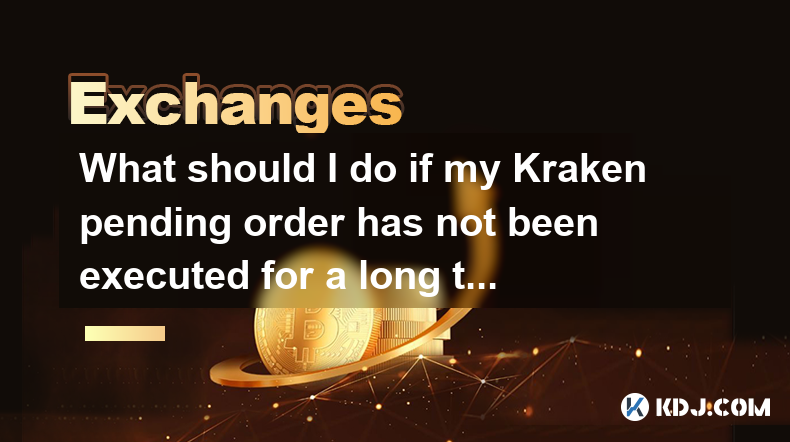
Key Points:
- Understanding Kraken's order execution process and potential delays.
- Troubleshooting steps for pending Kraken orders.
- Identifying and resolving common causes of delayed order execution.
- Exploring alternative solutions and contacting Kraken support.
What should I do if my Kraken pending order has not been executed for a long time? A pending order on Kraken, like other exchanges, means your buy or sell order hasn't yet matched with a corresponding order from another trader at the specified price. Several factors can contribute to this delay, ranging from market conditions to technical issues. This article explores troubleshooting steps to address this common problem.
Understanding Order Types and Market Conditions:
Kraken offers various order types, each with its own execution characteristics. A market order executes immediately at the best available price, while limit orders only execute when the market price reaches your specified price. Stop-loss orders trigger when the price falls below a certain point, while stop-limit orders combine stop and limit order functionalities. The type of order significantly impacts execution time. Market volatility and low liquidity in a particular cryptocurrency pair can also lead to prolonged pending orders, especially for limit orders.
Troubleshooting Your Pending Kraken Order:
- Check Your Order Details: Verify the order type, price, and quantity. Ensure the price you set is realistic and competitive compared to the current market price. Incorrectly entered details are a common cause of delayed or unexecuted orders.
- Examine Market Conditions: Check the current market price for your chosen cryptocurrency pair. If your limit order price is significantly far from the current market price, it's unlikely to be filled quickly. Low trading volume can also contribute to delays.
- Ensure Sufficient Funds: Make sure you have enough funds in your Kraken account to cover the order, including fees. Insufficient funds will prevent order execution.
- Verify Account Status: Confirm that your Kraken account is in good standing. Any account restrictions or issues might prevent order execution. Check for any messages or notifications from Kraken.
- Check for Technical Issues: Temporarily intermittent technical issues on Kraken's platform can sometimes delay order execution. Check the Kraken status page for any reported outages or service disruptions.
Addressing Specific Order Issues:
- Limit Orders Not Executing: If your limit order hasn't executed, it's likely the market price hasn't reached your specified price. Consider adjusting your price to be more competitive or canceling the order and placing a new one at a more realistic price. Remember that highly volatile markets can make even small price adjustments difficult.
- Stop-Loss Orders Not Triggering: If your stop-loss order hasn't triggered despite the price falling below your stop price, ensure your order parameters are correct and that your stop price is appropriate for the current market conditions. Significant price slippage might mean the price moved beyond your stop price before the order could be filled.
- Large Order Delays: Executing large orders often takes longer than smaller orders, particularly in less liquid markets. Consider breaking down your large order into smaller, more manageable orders for faster execution.
Advanced Troubleshooting Steps:
- API Issues (If Applicable): If you're using Kraken's API, ensure your API keys are correct and your API connection is stable. Any errors in your API code or network issues could prevent orders from being sent or executed correctly. Review your API logs for any errors.
- Browser/Software Issues: Ensure you are using a compatible browser and have the latest version of the Kraken website or trading application. Outdated software or browser extensions can interfere with order execution.
Contacting Kraken Support:
If you've exhausted all troubleshooting steps and your pending order remains unexecuted, contact Kraken's customer support. Provide them with your order ID, relevant screenshots, and a detailed description of the issue. They can investigate the problem and offer further assistance. Remember to be patient, as support response times can vary depending on the volume of requests.
Common Questions and Answers:
Q: My pending order has been pending for days. What should I do?
A: If your order has been pending for an extended period, it's likely due to an unrealistic price or extremely low liquidity. Check the current market price and adjust your order accordingly, or cancel it and place a new order at a more reasonable price. Contact Kraken support if the issue persists.
Q: Why is my limit order not executing, even though the market price has reached my specified price?
A: This could be due to insufficient liquidity at your specified price level. Many traders might be placing orders at the same price, leading to delays in execution. Try adjusting your price slightly or increasing the order size to improve the chances of execution.
Q: What are the typical reasons for delayed order execution on Kraken?
A: Delayed order execution can be caused by several factors, including low liquidity, unrealistic order prices, technical issues on the exchange platform, account restrictions, incorrect order parameters, or issues with the API if used.
Q: How long should I wait before contacting Kraken support about a pending order?
A: There's no set timeframe, but if your order remains pending for an unusually long time (consider several hours for smaller orders, or longer for larger ones in illiquid markets), it's a good idea to contact Kraken support.
Q: Can I cancel a pending order on Kraken?
A: Yes, you can usually cancel a pending order on Kraken at any time before it is executed. The process is usually straightforward through the Kraken interface or API.
Disclaimer:info@kdj.com
The information provided is not trading advice. kdj.com does not assume any responsibility for any investments made based on the information provided in this article. Cryptocurrencies are highly volatile and it is highly recommended that you invest with caution after thorough research!
If you believe that the content used on this website infringes your copyright, please contact us immediately (info@kdj.com) and we will delete it promptly.
- Deribit, Crypto.com, and BlackRock BUIDL: A New Era for Institutional Crypto?
- 2025-06-19 02:25:13
- SEI Price Prediction Q4 2025: Will SEI Reach New Heights?
- 2025-06-19 02:25:13
- EigenLayer, EigenCloud & A16z Crypto: A New Era of Verifiable Applications?
- 2025-06-19 02:32:03
- AscendEX & Conflux Network: Your Gateway to Web3 Opportunities
- 2025-06-19 02:35:12
- Bitcoin's Balancing Act: Navigating Geopolitical Tensions to Eye Record Highs
- 2025-06-19 00:25:12
- Crypto ATMs Banned in Washington City: What's the Deal?
- 2025-06-19 00:45:13
Related knowledge
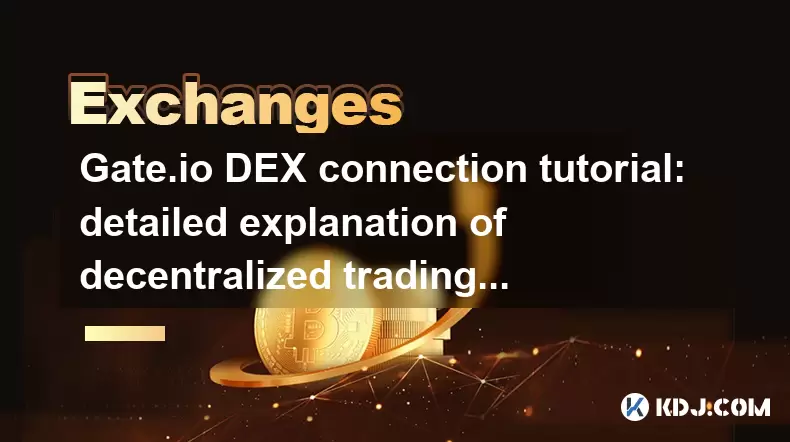
Gate.io DEX connection tutorial: detailed explanation of decentralized trading operation steps
Jun 12,2025 at 08:04pm
Connecting to Gate.io DEX: Understanding the BasicsBefore diving into the operational steps, it is crucial to understand what Gate.io DEX is and how it differs from centralized exchanges. Unlike traditional platforms where a central authority manages user funds and trades, Gate.io DEX operates on blockchain technology, allowing users to trade directly f...
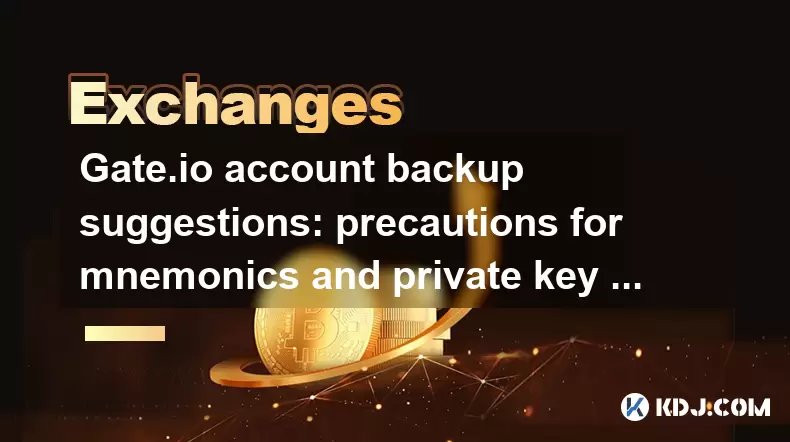
Gate.io account backup suggestions: precautions for mnemonics and private key storage
Jun 12,2025 at 10:56am
Understanding the Importance of Mnemonics and Private KeysIn the world of cryptocurrency, mnemonics and private keys are the core elements that grant users ownership over their digital assets. When using Gate.io or any other crypto exchange, understanding how to securely manage these components is crucial. A mnemonic phrase typically consists of 12 or 2...
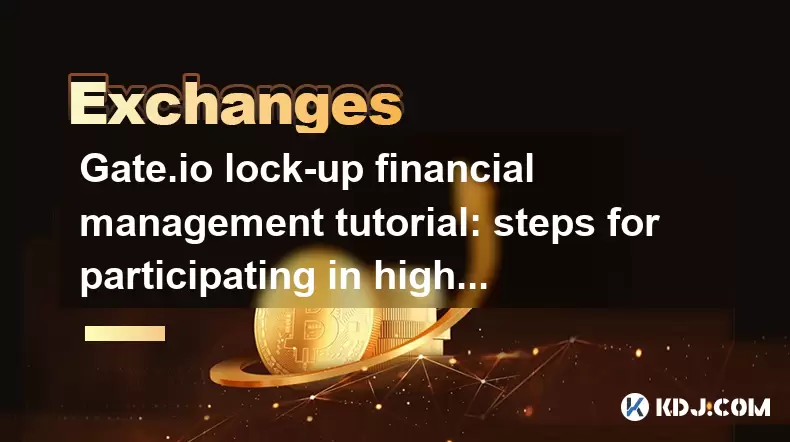
Gate.io lock-up financial management tutorial: steps for participating in high-yield projects and redemption
Jun 13,2025 at 12:43am
What Is Gate.io Lock-Up Financial Management?Gate.io is one of the world’s leading cryptocurrency exchanges, offering users a variety of financial products. Lock-up financial management refers to a type of investment product where users deposit their digital assets for a fixed period in exchange for interest or yield. These products are designed to prov...
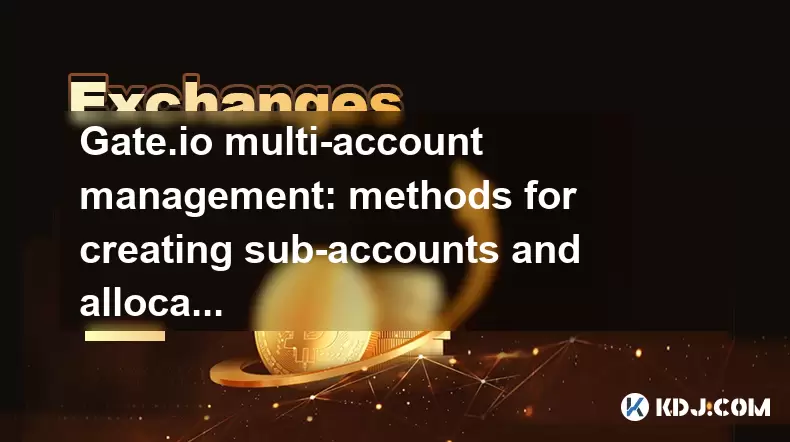
Gate.io multi-account management: methods for creating sub-accounts and allocating permissions
Jun 15,2025 at 03:42am
Creating Sub-Accounts on Gate.ioGate.io provides users with a robust multi-account management system that allows for the creation of sub-accounts under a main account. This feature is particularly useful for traders managing multiple portfolios or teams handling shared funds. To create a sub-account, log in to your Gate.io account and navigate to the 'S...
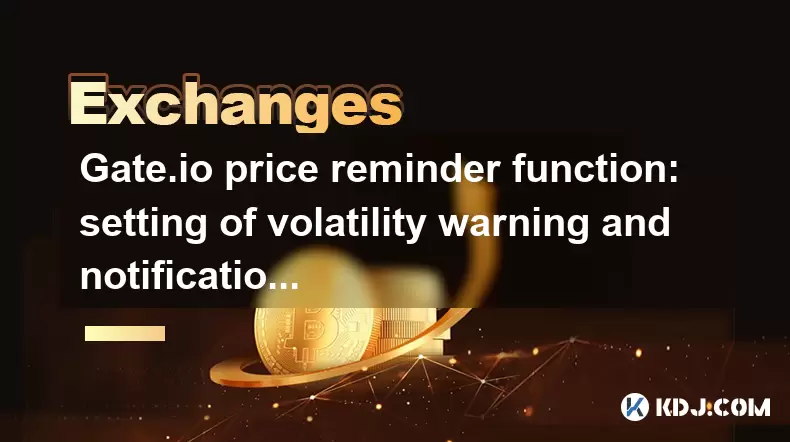
Gate.io price reminder function: setting of volatility warning and notification method
Jun 14,2025 at 06:35pm
What is the Gate.io Price Reminder Function?The Gate.io price reminder function allows users to set up custom price alerts for specific cryptocurrencies. This feature enables traders and investors to stay informed about significant price changes without constantly monitoring market data. Whether you're tracking a potential buy or sell opportunity, the p...

Gate.io trading pair management: tutorials on adding and deleting watchlists
Jun 16,2025 at 05:42am
What Is a Watchlist on Gate.io?A watchlist on Gate.io is a customizable feature that allows traders to monitor specific trading pairs without actively engaging in trades. This tool is particularly useful for users who want to track the performance of certain cryptocurrencies or trading pairs, such as BTC/USDT or ETH/BTC. By organizing frequently watched...

Gate.io DEX connection tutorial: detailed explanation of decentralized trading operation steps
Jun 12,2025 at 08:04pm
Connecting to Gate.io DEX: Understanding the BasicsBefore diving into the operational steps, it is crucial to understand what Gate.io DEX is and how it differs from centralized exchanges. Unlike traditional platforms where a central authority manages user funds and trades, Gate.io DEX operates on blockchain technology, allowing users to trade directly f...

Gate.io account backup suggestions: precautions for mnemonics and private key storage
Jun 12,2025 at 10:56am
Understanding the Importance of Mnemonics and Private KeysIn the world of cryptocurrency, mnemonics and private keys are the core elements that grant users ownership over their digital assets. When using Gate.io or any other crypto exchange, understanding how to securely manage these components is crucial. A mnemonic phrase typically consists of 12 or 2...

Gate.io lock-up financial management tutorial: steps for participating in high-yield projects and redemption
Jun 13,2025 at 12:43am
What Is Gate.io Lock-Up Financial Management?Gate.io is one of the world’s leading cryptocurrency exchanges, offering users a variety of financial products. Lock-up financial management refers to a type of investment product where users deposit their digital assets for a fixed period in exchange for interest or yield. These products are designed to prov...

Gate.io multi-account management: methods for creating sub-accounts and allocating permissions
Jun 15,2025 at 03:42am
Creating Sub-Accounts on Gate.ioGate.io provides users with a robust multi-account management system that allows for the creation of sub-accounts under a main account. This feature is particularly useful for traders managing multiple portfolios or teams handling shared funds. To create a sub-account, log in to your Gate.io account and navigate to the 'S...

Gate.io price reminder function: setting of volatility warning and notification method
Jun 14,2025 at 06:35pm
What is the Gate.io Price Reminder Function?The Gate.io price reminder function allows users to set up custom price alerts for specific cryptocurrencies. This feature enables traders and investors to stay informed about significant price changes without constantly monitoring market data. Whether you're tracking a potential buy or sell opportunity, the p...

Gate.io trading pair management: tutorials on adding and deleting watchlists
Jun 16,2025 at 05:42am
What Is a Watchlist on Gate.io?A watchlist on Gate.io is a customizable feature that allows traders to monitor specific trading pairs without actively engaging in trades. This tool is particularly useful for users who want to track the performance of certain cryptocurrencies or trading pairs, such as BTC/USDT or ETH/BTC. By organizing frequently watched...
See all articles

























































































